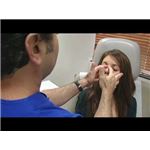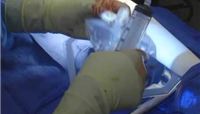News Details
Tissue expansion
- By:
- Posted 1/1/0001 12:00:00 AM
- 0 Comments
- 0 Views
- Rating: 0
Tissue expansion is a technique used by plastic and restorative surgeons to cause the body to grow additional skin, bone or other tissues.
Skin expansion
Keeping living tissues under tension causes new cells to form and the amount of tissue to increase. In some cases, this may be accomplished by the implantation of inflatable balloons under the skin (see figure). By far the most common method, the surgeon inserts the inflatable expander beneath the skin and periodically, over weeks or months, injects a saline solution to slowly stretch the overlaying skin. The growth of tissue is permanent, but will retract to some degree when the expander is removed. Breast reconstruction surgery, for example, can use this technique when the mammary gland was removed by surgery (mastectomy). Later, a more permanent breast implant filled with saline or silicone gel is inserted under the expanded skin pocket.
In other applications, excess skin is grown purposely by expansion on the back or the buttocks, so that it can be harvested later for transplantation to another site where skin was lost due to trauma, extensive wounds, surgery, burns, etc. which is usually non-surgical and applies tension externally using specialized devices to replace circumcised tissues with new cells.

Skin and tissue expander with inflatable balloon device
Scalp Reconstruction: The Role of Tissue Expansion
Tissue expansion has been used on the scalp for treating scalp scarring, in lieu of hair transplation when there is insufficient donor hair to transplant on the scar or the scar tissue is not vascularized to support hair growth. For instance, in a patient who had melanomas removed from the scalp resulting in alopecia defects (hair loss), tissue expansion can be used to allow for the removal of scars and complete hair coverage. The two main indications for choosing tissue expansion over hair grafting are the size and shape of the defect relative to potential supply of donor hair, and the quality and thickness of the scar tissue. Areas of significant scarring and/or tissue atrophy, which is likely to make hair grafting unsuccessful, are best excised and replaced by normal expanded scalp skin. Theoretically, there is no limit to the amount of tissue that can be created with tissue expansion, provided the process is conducted gradually.
Skin expansion using a subcutaneous inflatable balloon
Bone expansion
Bone is another tissue that can be expanded relatively easily, by using external devices which are slowly separated using mechanical contraptions, so that bone grows in response to elongation (bone distractor). Other techniques and external devices have been studied and have shown some success, such as in the fitbone surgery. This technique was pioneered in 1951 by the Russian physician Ilizarov, and is called the Ilizarov apparatus. It is capable of lengthening limbs in cases of pathological loss of bone, asymmetry of limbs, dwarfism, short stature, etc. In reconstructive and cosmetic surgery, bone expanders have been used to elongate the mandibula in cases of congenital disorders, trauma, tumors, etc. Other newer devices such as the orthofix and intramedullary skeletal kinetic distractor (ISKD) are also used for limb lengthening. It can add over 6 inches per bone, but is expensive, painful, and time-consuming (each procedure lasts around 8–12 months). more on wikipedia...
















